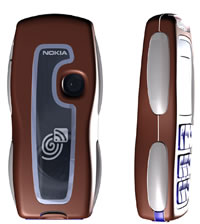It comes as little surprise that a new report from Analysys, global advisers on telecoms, IT and media, reports that over 50 million broadband users in Western Europe could potentially be using private Voice over Internet Protocol Applications (PVAs) by 2008. As a result, the impact on traditional telephony providers’ revenues could reach 6.4 billion euros (~$8.23Bn, ~£4.47Bn) in 2008, representing 13 per cent of the residential fixed-line voice market.
VoIP technology – used in excellent applications such as Skype – works by digitising voice in data packets, sending them over the Internet using TCP/IP networks, and then reconverting them into voice at the destination. As well as offering a ‘free’ alternative for voice conversations compared to traditional fixed lines, you can also compress voice packets, route them, convert them to a new better format, and so on – bypassing the existing PSTN network.
Digital signals are also more noise tolerant than analogue ones – a feature appreciated by users communicating overseas. With VoIP, you can also talk all the time with every person you want (as long as the other person is also connected to Internet at the same time) for no call charges. And, in addition, you can talk with multiple people (conference call) at the same time.
Analysys advises that incumbent public switched telephone network (PSTN) operators are highly vulnerable and should assess the weaker segments of their market and create targeted packages to retain valuable customers. They also advise that service providers should also make subscriptions the core of their service packages.
“The recent rapid take-up of Private Voice Applications (PVAs) using free downloadable software from providers such as Skype raises the possibility of the appearance of a critical mass of PVA users that could unleash a significant structural change in the voice market by the removal of a large proportion of PSTN revenues,” says report co-author Stephen Sale. “In the residential market, PVAs are typically used to make longer calls to friends and family, the core telephony business of fixed-line incumbents. In combination with increased mobile usage, this could render the PSTN subscription worthless for many broadband users. Fixed-line voice would face not only mobile substitution, but PVA substitution as well.”
The report, Voice Communications: From Public Service to Private Application, examines the potential impact of these applications on the residential voice market. It uses new market models to show that, given favourable future regulatory and other conditions, the rapid adoption of PVAs could generate direct revenues of over 3.5 billion euros (~$4.5Bn, ~£2.44Bn), the bulk (about 85 per cent) stemming from subscriptions, not call charges.
This emphasises the huge importance that the subscription element will have in a future multiservice mix and in establishing PVAs in the mass market. Further research from consultancy firm Mercer has suggested that Internet-based phone services could be in use by up to 30 per cent of homes in the UK and the US in the next three years.
The report is available to purchase online at http://research.analysys.com/stor, priced at £1,700 (approximately 2,500 euros).
 Nokia has lifted the lid on the world’s first NFC (Near Field Communication) equipped mobile phone by adding the special NFC clip-on shell to their 3220, a tri-band camera phone that is available in two versions (Euro/Asia & America). With its build-in NFC shell, the phone is the latest step in the development of innovative products for mobile communications.
Nokia has lifted the lid on the world’s first NFC (Near Field Communication) equipped mobile phone by adding the special NFC clip-on shell to their 3220, a tri-band camera phone that is available in two versions (Euro/Asia & America). With its build-in NFC shell, the phone is the latest step in the development of innovative products for mobile communications.